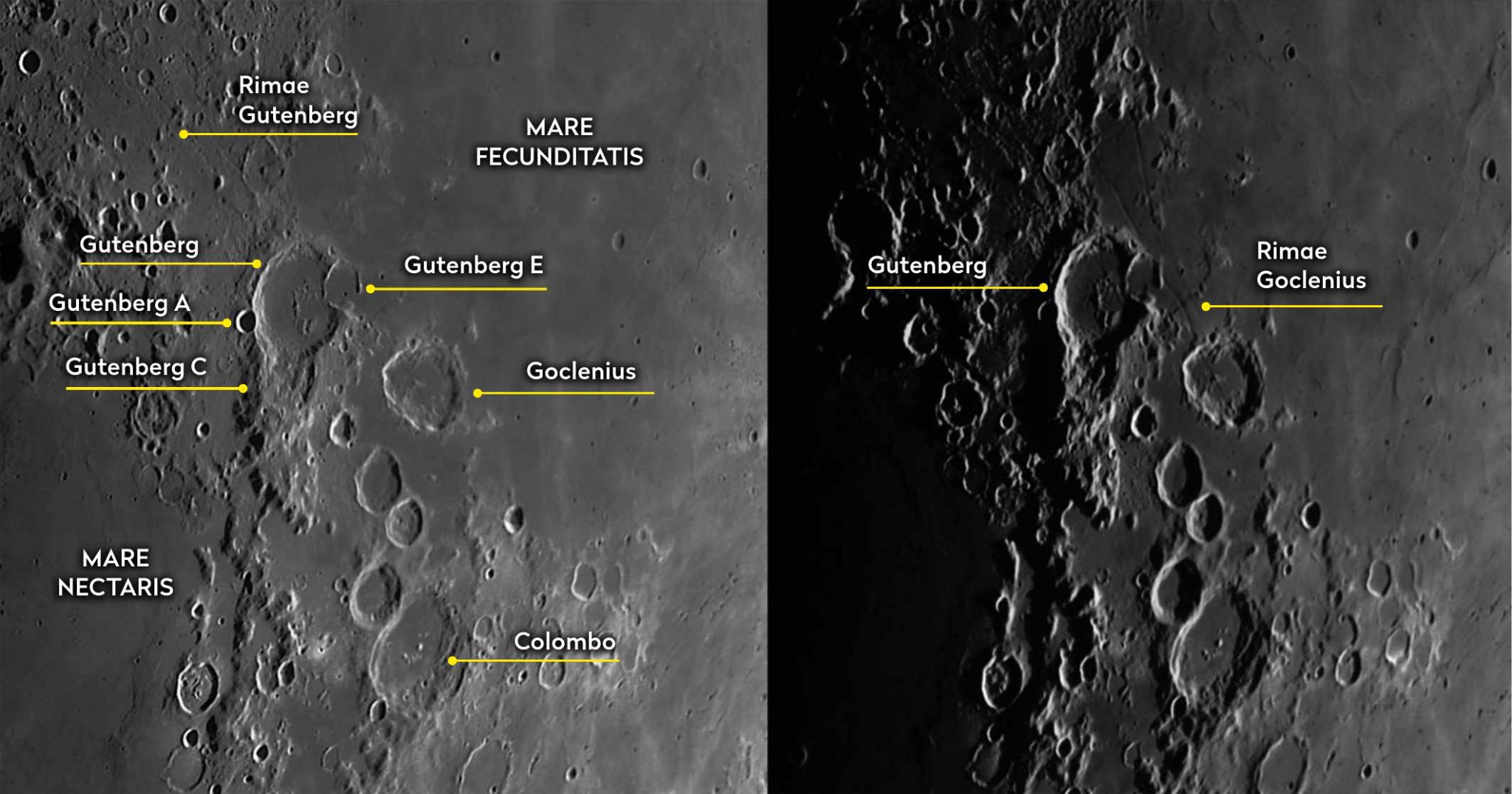June’s top lunar feature to observe

Gutenberg
Type: Crater
Size: 75km
Longitude/latitude: 41.2° E, 8.6° S
Age: Older than 3.9 billion years
Best time to see: Five days after new Moon (22 June) or four days after full Moon (6–7 June)
Minimum equipment: 50mm refractor
Gutenberg is an ancient crater located on the western shore of 600 x 500km Mare Fecunditatis, the Sea of Fertility. It’s the northernmost of a rag-tag collection of similar ringed formations which adorn this section of Fecunditatis’s edge, sharing the attribute of being the largest member of the group with Colombo 240km to the southeast; both Gutenberg and Colombo are 75km in diameter.
Gutenberg looks pretty battered although, with scrutiny, about three-quarters of its rim can be traced. The rim is interrupted in three places. The southwest rim section has had a subtle inversion due to 15km Gutenberg A, a fine example of a banded crater with smoothly descending inner walls leading to a 4km-diameter smooth circular floor. A banded crater is one which shows alternating light and dark radial bands on its inner walls.
To the south is 45km Gutenberg C, a feature that appears even older than Gutenberg. Gutenberg C appears to have formed on an elevated highland section, the northern portion of which has been removed by the formation of the main Gutenberg crater. The eastern rim of Gutenberg is the most damaged; 28km Gutenberg E has completely flattened it and is itself completely flooded but also incomplete, missing a small section of its southeast and southwest rim. Its lava surface is co-joined with Gutenberg’s, appearing as a continuous stretch. A small 3.4km craterlet is located in the southern portion of Gutenberg E’s floor.

Internally, Gutenberg’s rim descends towards the smooth, lava-filled floor. The height of the rim is around 2km, the inner descent ramp varying in width from 4.1km in the southeast to 14.9km in the southwest. The best-preserved section to the west, ignoring the Gutenberg A intrusion, is around 9km wide. The crater’s floor appears rough towards the east where peaks of mostly submerged structures can be seen. Linear rilles cross the floor, entering Gutenberg’s northern rim as a pair of grabens – sunken floor sections between two fault lines – crossing just north of the ’central mountains’ then passing across the elevated floor peaks.
The rilles are part of Rimae Gutenberg, a 330km set of linear rilles starting further to the northwest. Approximately 2.5km wide, these features are best seen with oblique illumination when the terminator is nearby. Another set of parallel rilles appears to run across the surface of Mare Fecunditatis, further to the east. These belong to Rimae Goclenius, the 55kmdiameter crater Goclenius being located 114km, centre-to-centre, southeast of Gutenberg. One of the Goclenius rilles can also be seen passing through its parent crater. These impressive rilles are best seen with a 200mm or larger telescope.